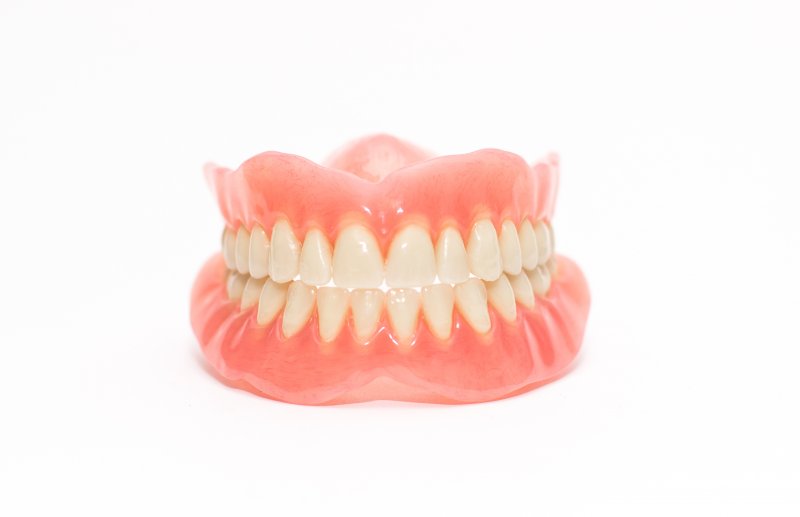
Humans have dealt with the problem of lost teeth since before the dawn of history, and throughout the millennia they have sought ways to replace them. As you’d probably guess, dental restorations in more primitive times were not as lifelike, comfortable, reliable, effective, or safe as they are today. Here’s how dentures have evolved over the centuries so you can appreciate how comfortable and realistic they are in their modern form.
The Dawn of Dentures
Around 700 BC in northern Italy, the Etruscans began making false teeth by tying together human or animal teeth with gold wires. These primitive dentures were not structurally sound enough to withstand the chewing process, so they were probably used for aesthetic purposes. Similar artifacts have been found at archaeological sites in Egypt and Mexico. In some cases, primitive dental implants made from seashells, bones, or carved stones were driven into the space that was missing a tooth. These methods could sometimes work pretty well if the jawbone fused to them.
The oldest known set of complete dentures was made of wood and discovered in Japan. They were used in the sixteenth century, and this type of denture continued to be used into the nineteenth century.
I Cannot Tell a Lie: George Washington’s Dentures Were Not Made of Wood
George Washington’s famous set of dentures was made from carved hippopotamus ivory along with human, horse, and donkey teeth. In this era, ivory from hippopotami, walruses, and elephants was used to create dentures that could replace complete sets of teeth. These dentures were quite expensive, so only the wealthy could afford them. However, ivory would eventually become stained and produce a foul smell while also being uncomfortable to wear. These types of dentures were worn into the early nineteenth century.
Nineteenth Century Dentures
As global trade developed, sugar became more and more popular in Europe. This led to many people losing most of their teeth by the age of fifty, driving demand for ways to replace them. Many teeth were taken from the dead on Europe’s battlefields, and these even became status symbols among the wealthy elite. Teeth were also taken from executed criminals or sold by desperately poor people.
Modern Dentures
In 1820, a silversmith attached porcelain teeth to gold plates using springs and swivels. This allowed the artificial teeth to function more like the real thing, resulting in the first modern set of dentures. While this particular model was very expensive, alternatives were made using hardened rubber in the mid-nineteenth century by the Goodyear family. These dentures were more affordable and could be molded to fit the patient’s gums. They were commonly used until the twentieth century, when acrylic resin became the standard material.
Today’s dentures are incredibly lifelike and are so comfortable that you might forget that they are there. With proper care, they can last up to ten years. Consulting with your dentist can determine if you are a good candidate for dentures.
About the Practice
Cosmetic & Restorative Dentistry of the Keys goes above and beyond to provide patients with the greatest dental care available in Big Pine Key, FL. Led by Drs. Amanda Cobb and Dan Mazor, the staff delivers excellent oral health care services while creating a warm and comfortable environment. Areas of expertise include general, cosmetic, restorative, and emergency dentistry in addition to denture services. To learn more about dentures, contact the office online or dial (305) 680-1553.
